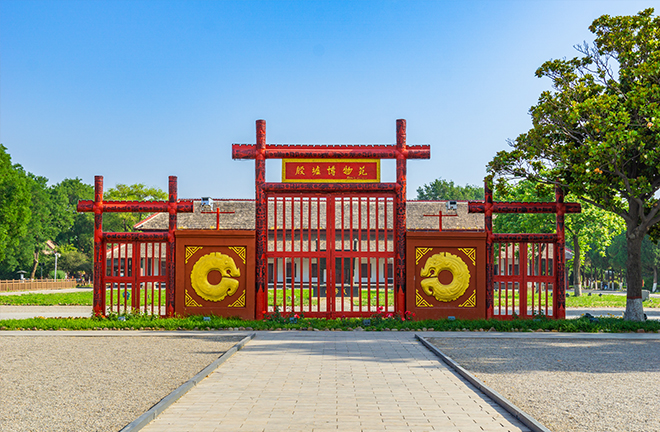Refining globally significant intellectual symbols of Chinese civilization

Exploring a system of intellectual symbols of Chinese civilization offers valuable insights into understanding China. Photo: TUCHONG
The intellectual symbols of Chinese civilization represent the intellectual foundation of creating a new form of human advancement, serving as vital elements for accelerating the development of Chinese discourse and Chinese narrative systems, and for effectively telling China’s stories and conveying its voice.
Five prominent features
In the process of distilling and presenting the intellectual symbols of Chinese civilization with global significance and enhancing its international communication capacity and influence, “five prominent features” are particularly important.
To distill and showcase the intellectual symbols of Chinese civilization with global significance, it is crucial to grasp the civilization’s prominent continuity. Chinese civilization stands alone as the only undisrupted, continuous civilization on earth. By focusing on historical continuity, the process helps the world recognize and understand the seamless evolutionary progression from ancient China to modern China, contemporary China, and future China.
The distillation and presentation of intellectual symbols of Chinese civilization requires creativity. In the digital era, the intellectual symbols of Chinese civilization can be conveyed across borders through digital forms of literature, art, cultural relics and so on.
To distill and present the intellectual symbols of Chinese civilization with global significance, it is essential to highlight its prominent unity. Chinese civilization boasts a unique cultural and political unity.
To distill and present the intellectual symbols of Chinese civilization, it is required to promote the civilization’s prominent inclusiveness. Within Chinese civilization, diverse cultural branches coexist harmoniously, and various social development models learn from each other. Externally, it has always embraced the principles of inclusivity and seeking common ground while respecting differences, absorbing foreign cultures and diverse civilizations.
Moreover, to refine and showcase the intellectual symbols of Chinese civilization, it is crucial to place an emphasis on its prominent peacefulness. Peace, harmony, and concordance have been ideals pursued and upheld by the Chinese nation since ancient times.
Object , thought & institution
The modernization process of modern China can be divided into three general stages: changes in material culture, institutional reforms, and thought transformation. Today, we can draw on this framework to distill the intellectual symbols of Chinese civilization with global significance from the following three perspectives: material civilization (objects), intellectual civilization (thought), and institutional civilization (institution).
In terms of material civilization, research findings from a series of major archaeological projects demonstrate that while Chinese civilization has undergone temporal and spatial changes, dynastic changes, and changes in social structures, its form has maintained a stable continuity. Intellectual symbols serve as symbolic and externalized representations of Chinese civilization, focusing on “shape.” Cultural relics are both a witness to and the culmination of this civilizational history, providing a vital source of these symbols.
As for intellectual civilization, elements such as language, script, the teachings of various philosophical schools during the period from the pre-Qin times to the early Han Dynasty, and other forms of fine traditional Chinese culture distinctively embody the humanistic spirit, thinking concepts, and moral principles of Chinese civilization. They encompass the Chinese cosmopolitan outlook, worldview, outlook on society, and ethical values, offering significant reference points for addressing the challenges faced by humanity.
On the institutional civilization level, China has developed unique institutional forms throughout its more than 5,000 years of civilizational history embodying a pattern of “unity in diversity,” such as the county-prefecture system, demonstrating distinctive innovation in global civilizational history.
Global significance
The modern value of intellectual symbols of Chinese civilization should be interconnected with their global significance, highlighting humanity’s shared values and grounding them in the concept of a human community with a shared future, with the aim of achieving shared understanding, empathy, and cooperation.
To deeply explore the intellectual symbols of Chinese civilization, we can utilize global media events for shared dissemination. First, the sharing of values and ideals can be realized through global sporting events. Second, the sharing of cultural resources can be achieved through international civilizational initiatives and cooperation between civilizations.
Empathetic communication can trigger emotional connections and mutual resonance in international narratives. In global communication, appealing to emotions helps transcend temporal and spatial limitations, bridge cultural differences, and overcome ideological divides. Authentic, detailed, and relatable narratives can resonate with international audiences. To distill and present intellectual symbols of global significance, emotions that most easily evoke empathy, such as familial love, romantic love, and friendship, can be used to draw people closer emotionally.
In presenting the intellectual symbols of Chinese civilization, it is necessary to bridge gaps in shared experiences. In the new media environment, making full use of all media platforms can help Chinese civilization “go global.”
Xiang Fen is a professor from the School of Journalism and Communication at the University of Chinese Academy of Social Sciences.
Edited by ZHAO YUAN

 PRINT
PRINT CLOSE
CLOSE